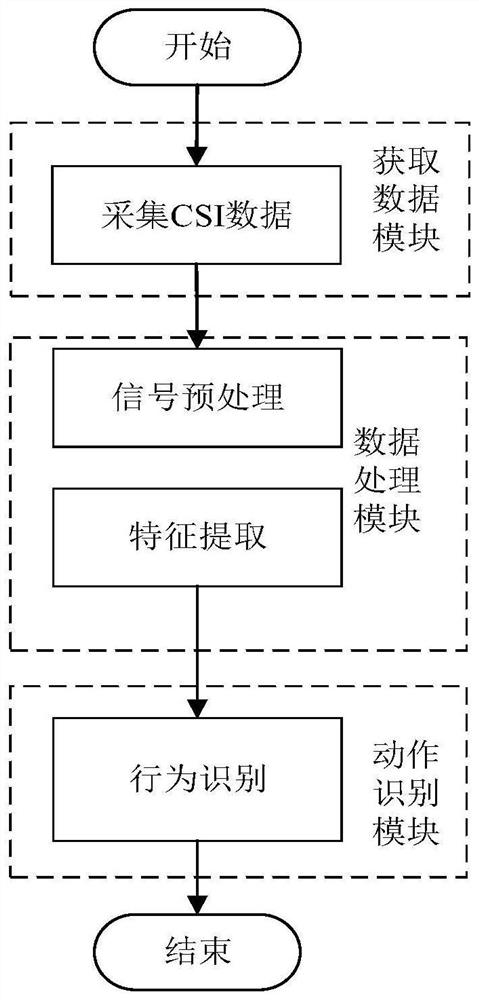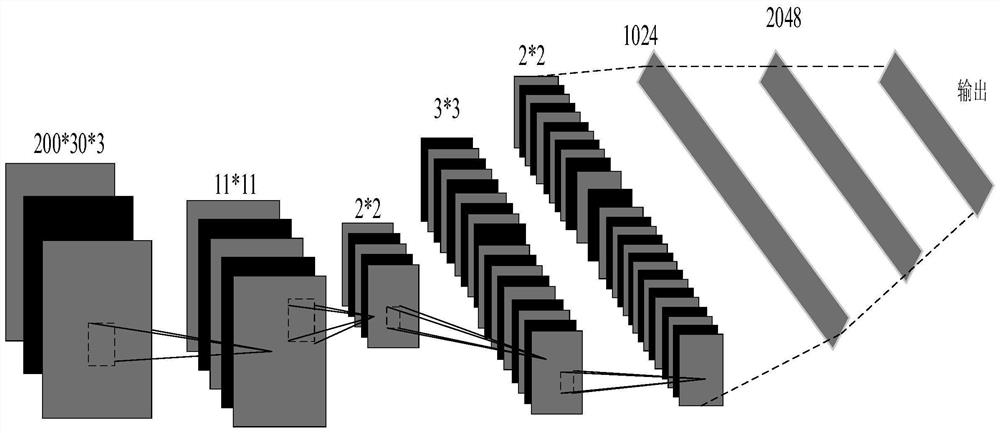Stranger action recognition method based on channel state information
A channel state information and action recognition technology, applied in the field of stranger action recognition, can solve problems such as affecting the recognition accuracy.
- Summary
- Abstract
- Description
- Claims
- Application Information
AI Technical Summary
Problems solved by technology
Method used
Image
Examples
Embodiment 1
[0018] combine figure 1 , a method for stranger action recognition based on channel state information of the present invention includes four modules such as CSI data collection, signal preprocessing, feature extraction, and behavior recognition, and the specific steps include:
[0019] 1) Place the transmitter and receiver anywhere in the room, and the user stands between the transmitter and receiver to perform actions to obtain channel status information;
[0020] 2) Use the LOF algorithm to filter out abnormal values on the collected original information;
[0021] 3) After preprocessing, the data is brought into the convolutional neural network to extract features and obtain feature vectors;
[0022] 4) Send the feature vector into the SVM for secondary training to obtain the CNN-SVM combination model. The above is the online training stage;
[0023] 5) In the offline recognition stage, after the data to be tested is processed in the first two steps, it is brought into ...
Embodiment 2
[0025] combine figure 1 , a stranger action recognition method based on channel state information of the present invention, specifically:
[0026] 1. First collect the original CSI data of the wireless signal from the receiver, and then perform data preprocessing, feature extraction, and action recognition in sequence.
[0027] 2. In the data collection stage, place the transmitter and receiver at any position in the room, but it is best to separate them by a certain distance. The user stands between the transmitter and the receiver to perform actions. The transmitter uses a The root antenna is a TP-Link802.11n wireless router, and the receiver is a levono laptop equipped with an Intel 5300 network card and three external antennas. Set the sampling frequency to 1000Hz, and use the receiver to obtain channel status information.
[0028] 3. First, preprocess the received raw data and use the LOF algorithm. If the obtained local anomaly factor LOF value is greater than 1, it wil...
PUM
 Login to View More
Login to View More Abstract
Description
Claims
Application Information
 Login to View More
Login to View More - R&D
- Intellectual Property
- Life Sciences
- Materials
- Tech Scout
- Unparalleled Data Quality
- Higher Quality Content
- 60% Fewer Hallucinations
Browse by: Latest US Patents, China's latest patents, Technical Efficacy Thesaurus, Application Domain, Technology Topic, Popular Technical Reports.
© 2025 PatSnap. All rights reserved.Legal|Privacy policy|Modern Slavery Act Transparency Statement|Sitemap|About US| Contact US: help@patsnap.com


